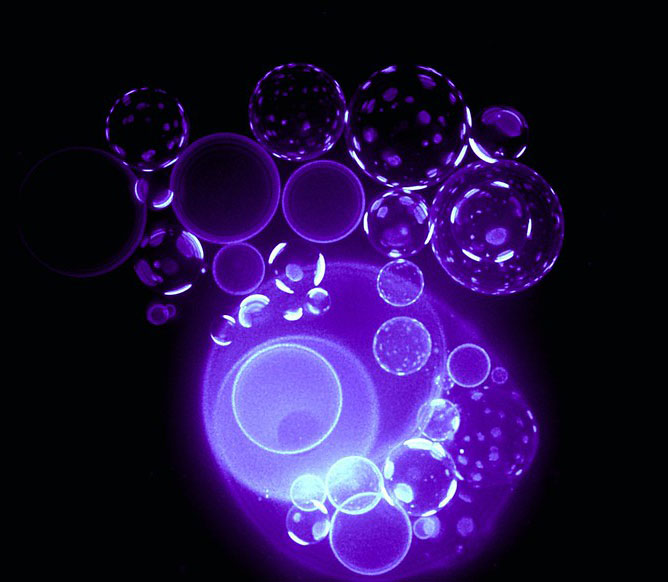Microfluidics Array Based Sorting, Isolation, and RNA Analysis in Single Extracellular Vesicles
Extracellular vesicles (EVs) such as microvesicles and exosomes are small membrane vesicles released by cells in the body. EVs are present in all biological fluids tested (e.g., blood, urine, cerebral spinal fluid) and contain various biomolecules including DNAs, RNAs, proteins and metabolites, and have been implicated as part of the cell-cell communication systems. Despite their importance, the current methods of isolating and characterizing EVs are technically challenging. The isolation methods usually cumbersome and irreproducible, and the characterization relies on techniques like Polymerase Chain Reaction (PCR), Next Generation Sequencing (NGS), and Mass Spectroscopy (MS) which just provide an aggregate of the overall RNA/DNA and protein content. During the characterization process, EVs are broken down to obtain their internal contents. Consequently, the molecular information at individual EV is lost. Given the heterogeneity of EVs, it is imperative to study EV-mediated intercellular signaling processes at the single EV level in order to gain important insights of their effects on promoting drug resistance, immunosuppression, epithelial-to-mesenchymal transition (EMT), cancer metastasis, and cachexia. Therefore, there is a critical need to develop technologies that provide accurate and efficient analysis of the molecular content within individual EVs.
We are taking an integrated system using a size exclusion chromatography to first sort the EVs in biofluids into well-defined size-based subpopulations, and then distribute each subpopulation into a set of parallel microfluidic channels where each channel is patterned with a number of microdomains tethered with antibody-conjugated liposomal nanoparticles containing molecular beacons (MBs) for enriched isolating/capturing of specific membrane protein/peptide-rich single EVs in the subpopulation, and simultaneously identification of specific RNA targets via MB-RNA hybridization when the captured EVs are fused with liposomes. Fluorescence labelled antibodies may also be added to each microchannel to quantify the target membrane protein content of the captured single EVs.
The applicability of this single EV characterization technology will be tested with glioma cancer cells as well as blood and cerebral fluid samples from patients. Furthermore, EV-based cell-cell communication can also be assessed to investigate how specific glioma EV subpopulations may involve in immunosuppression/stimulation by affecting brain immune cells.
Recent Relevant Publication:
Extracellular mRNA Detected by Tethered Lipoplex Nanoparticle Biochip for Lung Adenocarcinoma Detection. Lee, J., Yang, Z., Rahman, M., Ma, J., Kwak, K. J., McElory, J., Shilo, K., Goparaju, C., Yu, L., Rom, W., Kim, T. K., Wu, X., He, Y., Wang, K., Pass, H. I., Nana-Sinkam, S. P. (2016) Am J Respir Crit Care Med.193 (12) 1431. PMID 27304243
Current Project Lead Personnel:
 |
| Kai Wang |



 hood-price.isbscience.org/research/analysis-of-single-extracellular-vesicles/
hood-price.isbscience.org/research/analysis-of-single-extracellular-vesicles/